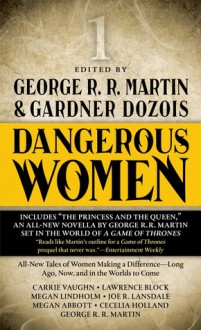
The rise and fall of the Targaryens in Westeros over the course of 300 years is essentially the backstory for George R.R. Martin’s A Song of Ice and Fire series (aka Game of Thrones). Taking on the guise as a master of the Citadel, Martin’s Fire & Blood: From Aegon I to the Regency of Aegon III is the first volume of two detailing the history of the Targaryen dynasty and the unified Westeros they ruled that readers would first meet in A Game of Thrones.
Unlike the vast majority of the books concerning Westeros, Martin writes this one as a pure—yet fictional—history book, though with a clear narrative structure, detailing the lives of the Targaryens and the events that impacted their reigns from Aegon’s Conquest down to the Regency of his great-great-great-grandson Aegon III in the aftermath of The Dance of the Dragons. The book begins with a quick family history of the Targaryens with their flight from Valyria before the Doom and the century leading up to Aegon’s conquest of Westeros before delving into said conquest with his sister-wives. Then just a regular history book, the text goes into how the new realm was brought together and how the Targaryens attempted to bring Dorne into the realm during Aegon’s life. Next came the reigns of the Conqueror’s two sons showing how the new dynasty was tested once the founder was missing and the problems faith and cultures play when interacting with one another. Follow the death of Maegor the Cruel, the long reign of Jaehaerys I with considerable influence from his sister-wife queen Alysanne shows how dynasty’s rule was cemented even though seeds were planted for a crisis in the succession of the line that would explode in civil war after the death of their grandson Viserys I between his eldest daughter and her younger half-brother that would devastate the realm and basically kill off all the dragons—both human and creature—leaving a 10-year boy left to sit the Iron Throne.
Although around half the material in this book was a reprint from A World of Ice and Fire, “The Princess and the Queen, “The Rogue Prince”, and “Sons of the Dragon” it was all the new material and some retconned details of this 700 page book that is really interesting. The reign of Jaehaerys and Alysanne was essentially all new as was the details about how The Dance of the Dragons ended and the resulting multiple Regencies for Aegon III. Along with all this information, which fleshed out the backstory of Westeros even more, were parallels of characters from the main series—as well as the Dunk & Egg novels—with historical personages that appeared in this history that gives big fans thoughts to ponder about what might be in store with the former.
Overall Fire & Blood: From Aegon I to the Regency of Aegon III is a very good book for those fans of ASOIAF/GoT who look in-depth at their favorite series. Personally as fan of the series and being interested in the depth Martin gives his series, as well as big history read, this book was fantastic. Yet if you are a casual fan or simple a show fan that hasn’t read the books, this book isn’t for you.

 Log in with Facebook
Log in with Facebook 







